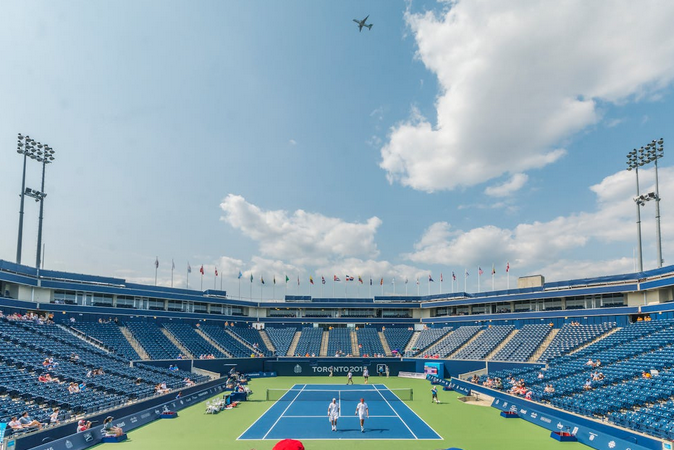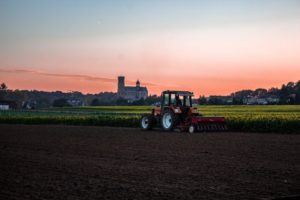Classic cars have a timeless charm that modern vehicles often can’t match. They embody the style, craftsmanship, and personality of a bygone era. For many, owning one is more than just having transportation. It’s about connecting to history. Whether it’s a vintage sports car or a post-war sedan, each vehicle tells a story, and a devoted Alex Manos classic car buyer can totally relate to the hype.
Choosing Beverly Hills Car Club That Stands Out
When you’re new to collecting, finding a trustworthy dealership matters. Beverly Hills Car Club has built a reputation for its vast inventory and transparent approach. The team understands that first-time buyers need guidance, not pressure. Their Los Angeles showroom is filled with models from different decades and manufacturers, allowing you to compare styles and conditions in one place. This variety ensures you can explore without feeling limited to a single brand or type.
Setting a Realistic Budget

Before stepping into the showroom, it’s essential to determine your budget. Classic cars range widely in price depending on rarity, condition, and demand. Beverly Hills Car Club offers options for every price point, from affordable entry-level classics to high-end collector pieces. Keep in mind that the purchase price is just the beginning. You’ll need to factor in insurance, storage, and potential restoration work. Planning ahead helps you make a confident choice without financial strain.
Evaluating Condition and Authenticity
Condition is one of the most important aspects when buying your first classic car. At Beverly Hills Car Club, you can see everything from well-preserved originals to project cars needing full restoration. For a beginner, starting with a car that runs well and has minimal mechanical issues is often the safest choice. The dealership provides detailed descriptions and photographs, and their team can walk you through the history and authenticity of each model. This transparency helps ensure you know exactly what you’re buying.
Test Driving and Asking Questions

Even if you’ve admired a model for years, sitting behind the wheel is essential. Test driving a classic car lets you feel how it handles, accelerates, and brakes. Beverly Hills Car Club encourages potential buyers to take this step seriously. Ask questions about the car’s history, maintenance, and any recent repairs. If you’re unfamiliar with classic car mechanics, consider bringing along a trusted mechanic for a second opinion. This hands-on approach can save you from surprises later.
Navigating Paperwork and Ownership Transfer
Buying a classic car involves more than just payment. There’s registration, title transfer, and sometimes import paperwork if the car has an international background. Beverly Hills Car Club’s staff helps streamline this process. They’re familiar with the documentation needed for classic and antique vehicles in California and beyond. For a first-time buyer, this support can be invaluable. It ensures the transition from showroom to your garage is smooth and stress-free.
Once you’ve purchased your first classic car, the real enjoyment begins. Owning a vintage vehicle means taking pride in its upkeep. Routine maintenance, proper storage, and regular driving help preserve its condition. Beverly Hills Car Club can connect you with reputable service providers who understand the nuances of older models. For many owners, the joy comes not just from driving, but from knowing they’re preserving a piece of automotive history. With the right care, your first classic car can remain a source of pride and enjoyment for years.…












 Fancy weed chocolates are an absolute treat for both your taste buds and your senses. These delectable confections come in a variety of flavors and textures, from smooth dark chocolate ganaches to velvety milk chocolate truffles. If you’re curious about this fancy stuff, check out
Fancy weed chocolates are an absolute treat for both your taste buds and your senses. These delectable confections come in a variety of flavors and textures, from smooth dark chocolate ganaches to velvety milk chocolate truffles. If you’re curious about this fancy stuff, check out  Referral programs serve as a perfect avenue for attracting new patients to your medical practice. By offering incentives or rewards to existing patients who refer their friends, family, or colleagues, you tap into a valuable network of potential patients who are more likely to trust the recommendation of someone they know. Word-of-mouth referrals are powerful because they come from a trusted source, making prospective patients more inclined to choose your practice over others.
Referral programs serve as a perfect avenue for attracting new patients to your medical practice. By offering incentives or rewards to existing patients who refer their friends, family, or colleagues, you tap into a valuable network of potential patients who are more likely to trust the recommendation of someone they know. Word-of-mouth referrals are powerful because they come from a trusted source, making prospective patients more inclined to choose your practice over others. A strong reputation is crucial for the success of any medical practice. Referral programs can play a significant role in building and maintaining a positive reputation within your community. When satisfied patients refer their contacts to your practice, it reflects positively on the quality of care and service you provide. As the number of referrals grows, so does your reputation as a trusted healthcare provider. A positive reputation not only attracts new patients but also helps solidify your standing in the community and positions you as a go-to choice for healthcare needs.
A strong reputation is crucial for the success of any medical practice. Referral programs can play a significant role in building and maintaining a positive reputation within your community. When satisfied patients refer their contacts to your practice, it reflects positively on the quality of care and service you provide. As the number of referrals grows, so does your reputation as a trusted healthcare provider. A positive reputation not only attracts new patients but also helps solidify your standing in the community and positions you as a go-to choice for healthcare needs. The variety of games at online casinos is vast, and your choice of games can significantly impact your experience. Familiarize yourself with the rules and strategies of different games to increase your chances of success. Whether you prefer slots, table games, or live dealer games, selecting games that match your skill level and preferences is essential. Additionally, consider playing games with a higher return-to-player (RTP) percentage, as these games generally offer better odds of winning.
The variety of games at online casinos is vast, and your choice of games can significantly impact your experience. Familiarize yourself with the rules and strategies of different games to increase your chances of success. Whether you prefer slots, table games, or live dealer games, selecting games that match your skill level and preferences is essential. Additionally, consider playing games with a higher return-to-player (RTP) percentage, as these games generally offer better odds of winning.


 Another advantage of having a professional financial advisor is that they have the expertise to generate higher returns on your investments. They will surely help you build a diversified portfolio, which in turn may lead to better returns over time. A financial advisor will guide where to invest and how much should be invested in each asset class. This way, you won’t put all your eggs in one basket and potentially suffer huge losses if one investment performs poorly. Furthermore, financial advisors monitor market trends and adjust their clients’ portfolios accordingly. They can advise when buying or selling assets is best based on current economic conditions. This type of active management may result in higher returns than passive investing.
Another advantage of having a professional financial advisor is that they have the expertise to generate higher returns on your investments. They will surely help you build a diversified portfolio, which in turn may lead to better returns over time. A financial advisor will guide where to invest and how much should be invested in each asset class. This way, you won’t put all your eggs in one basket and potentially suffer huge losses if one investment performs poorly. Furthermore, financial advisors monitor market trends and adjust their clients’ portfolios accordingly. They can advise when buying or selling assets is best based on current economic conditions. This type of active management may result in higher returns than passive investing.
 Ahimsa, or non-violence, is considered the primary virtue in yogic philosophy. It means to refrain from causing harm to oneself and others through thoughts, words, and actions. Ahimsa teaches us to be kind towards ourselves and those around us. When we practice ahimsa, we become more mindful of our thoughts and emotions.
Ahimsa, or non-violence, is considered the primary virtue in yogic philosophy. It means to refrain from causing harm to oneself and others through thoughts, words, and actions. Ahimsa teaches us to be kind towards ourselves and those around us. When we practice ahimsa, we become more mindful of our thoughts and emotions.
 Shaucha, or purity, is one of the major pillars of
Shaucha, or purity, is one of the major pillars of 
 Though taxes may not need to be paid on virtual funds, any winnings made from real money games are subject to taxation in line with the country’s regulations. Therefore, keeping track of any revenue earned from online gambling in Japan is essential, as declaring it when filing your taxes. Also, any revenue made from foreign services is subject to taxation, so it’s also important to be aware of this when gambling abroad.
Though taxes may not need to be paid on virtual funds, any winnings made from real money games are subject to taxation in line with the country’s regulations. Therefore, keeping track of any revenue earned from online gambling in Japan is essential, as declaring it when filing your taxes. Also, any revenue made from foreign services is subject to taxation, so it’s also important to be aware of this when gambling abroad. Just like any other type of gambling, there is the chance that you can lose money when playing online. Understanding this risk and being aware of your limitations when betting is essential. If you are unsure about the game or feel you may be losing control, it is best to seek help and advice.
Just like any other type of gambling, there is the chance that you can lose money when playing online. Understanding this risk and being aware of your limitations when betting is essential. If you are unsure about the game or feel you may be losing control, it is best to seek help and advice. When grilling, choosing leaner proteins like chicken breasts, fish fillets, and turkey burgers is vital. These cuts of meat contain less fat than other cuts, which can cause flare-ups when exposed to open flame. Flare-ups occur when fat drips onto the heat source below and causes a sudden flames burst. This can be incredibly dangerous, so stick to leaner proteins when grilling out!
When grilling, choosing leaner proteins like chicken breasts, fish fillets, and turkey burgers is vital. These cuts of meat contain less fat than other cuts, which can cause flare-ups when exposed to open flame. Flare-ups occur when fat drips onto the heat source below and causes a sudden flames burst. This can be incredibly dangerous, so stick to leaner proteins when grilling out!
 One of the most important aspects of a successful digital marketing campaign is to focus on conversion. You need to have a clear call-to-action (CTA) and lead capture form on your website to convert leads into customers. Your CTA should be visible and easy to find, and your lead capture form should be short and to the point. If you’re unsure how to create a CTA or lead capture form, there are plenty of online resources and tutorials that can help you out.
One of the most important aspects of a successful digital marketing campaign is to focus on conversion. You need to have a clear call-to-action (CTA) and lead capture form on your website to convert leads into customers. Your CTA should be visible and easy to find, and your lead capture form should be short and to the point. If you’re unsure how to create a CTA or lead capture form, there are plenty of online resources and tutorials that can help you out. Finally, one of the best ways to improve your digital marketing campaign is to double down on customer service. This means responding to customers’ questions and concerns and going above and beyond to solve their problems. By providing excellent customer service, you’ll create a positive association with your brand, leading to more sales and repeat customers.
Finally, one of the best ways to improve your digital marketing campaign is to double down on customer service. This means responding to customers’ questions and concerns and going above and beyond to solve their problems. By providing excellent customer service, you’ll create a positive association with your brand, leading to more sales and repeat customers. Unfortunately, many brick-and-mortar stores are closing at an alarming rate. There are a few reasons for this; the high cost of maintaining a physical location, online shoppers getting used to the convenience of buying what they want, when they want it at the click of a button. But whatever the reasons may be, e-commerce is on the rise, and retailers need to have an online store if they want to stay afloat.
Unfortunately, many brick-and-mortar stores are closing at an alarming rate. There are a few reasons for this; the high cost of maintaining a physical location, online shoppers getting used to the convenience of buying what they want, when they want it at the click of a button. But whatever the reasons may be, e-commerce is on the rise, and retailers need to have an online store if they want to stay afloat. One of the biggest reasons that retailers are opening online stores is because they want to reach a wider audience. With an online store, businesses can sell their products and services to people worldwide. This is a great way to expand your customer base and grow your business. Most people these days prefer to do most things online, from shopping to banking, so it only makes sense that retailers want to take advantage of this trend.
One of the biggest reasons that retailers are opening online stores is because they want to reach a wider audience. With an online store, businesses can sell their products and services to people worldwide. This is a great way to expand your customer base and grow your business. Most people these days prefer to do most things online, from shopping to banking, so it only makes sense that retailers want to take advantage of this trend. Who knew that something as simple as showering could affect your home bills? By cutting down the time you spend in the shower, you can
Who knew that something as simple as showering could affect your home bills? By cutting down the time you spend in the shower, you can 
 Farming sustainably can help reduce our reliance on fossil fuels. Traditional farming methods rely heavily on fossil fuels to power machinery, pump water, and transport crops. On the other hand, sustainable farming practices often use renewable energy sources such as solar and wind power. It reduces our need for fossil fuels and helps combat climate change. Moreover, sustainable farming can help us create a more efficient food system that does not rely on long supply chains that use significant amounts of fossil fuels.
Farming sustainably can help reduce our reliance on fossil fuels. Traditional farming methods rely heavily on fossil fuels to power machinery, pump water, and transport crops. On the other hand, sustainable farming practices often use renewable energy sources such as solar and wind power. It reduces our need for fossil fuels and helps combat climate change. Moreover, sustainable farming can help us create a more efficient food system that does not rely on long supply chains that use significant amounts of fossil fuels. Sustainable farming can also produce high-quality food. Traditional farming methods often involve the use of harmful chemicals that can degrade the quality of the food. Sustainable practices such as using organic fertilizers and crop rotation help improve food quality. It helps to ensure that we can consume healthy and nutritious food. The best part about it is that sustainable farming practices can be used to produce food for both humans and animals.
Sustainable farming can also produce high-quality food. Traditional farming methods often involve the use of harmful chemicals that can degrade the quality of the food. Sustainable practices such as using organic fertilizers and crop rotation help improve food quality. It helps to ensure that we can consume healthy and nutritious food. The best part about it is that sustainable farming practices can be used to produce food for both humans and animals. Poker Analyzer can help you to make more informed decisions while playing poker. This is because it provides information about your opponents’ hand ranges. This means that you will be able to determine the likelihood of them having a specific hand, which will help you make better decisions while playing. Poker Analyzer can also help you to identify exploitable tendencies in your opponents.
Poker Analyzer can help you to make more informed decisions while playing poker. This is because it provides information about your opponents’ hand ranges. This means that you will be able to determine the likelihood of them having a specific hand, which will help you make better decisions while playing. Poker Analyzer can also help you to identify exploitable tendencies in your opponents. This is extremely important because it allows you to make better decisions when playing against them. If you know how they play, you can figure out their next move and adjust your strategy accordingly. Poker Analyzer also keeps track of your performance. It will tell you when you make mistakes and how to correct them. This is vital information that can help you improve your game and win more money.
This is extremely important because it allows you to make better decisions when playing against them. If you know how they play, you can figure out their next move and adjust your strategy accordingly. Poker Analyzer also keeps track of your performance. It will tell you when you make mistakes and how to correct them. This is vital information that can help you improve your game and win more money. If you’re looking to get away from the noise and pollution of cities and towns, camping is a great way to do that. While camping, you’ll be surrounded by nature and enjoy all of its beauty.
If you’re looking to get away from the noise and pollution of cities and towns, camping is a great way to do that. While camping, you’ll be surrounded by nature and enjoy all of its beauty. If you’re looking for some peace, camping is the perfect solution. With no internet, television, or phone service available at most campsites, you’ll be able to relax and unwind without any distractions. It can be a great way to unplug from the world and take some time for yourself.
If you’re looking for some peace, camping is the perfect solution. With no internet, television, or phone service available at most campsites, you’ll be able to relax and unwind without any distractions. It can be a great way to unplug from the world and take some time for yourself. Because cuisine reflects the culture of a region, it can tell us much about its history. Until a few centuries ago, when global trade was not common, food was tied mainly to locally grown. As traders spread spices and crops, local cuisine became richer as more people incorporated these new ingredients into their diets.
Because cuisine reflects the culture of a region, it can tell us much about its history. Until a few centuries ago, when global trade was not common, food was tied mainly to locally grown. As traders spread spices and crops, local cuisine became richer as more people incorporated these new ingredients into their diets. These types of dab nails do not have sides. Larger pads can be used with this style. This style heats up faster than around nail. It reduces the chance of burning oil. There are also some disadvantages to this method of dabbing.
These types of dab nails do not have sides. Larger pads can be used with this style. This style heats up faster than around nail. It reduces the chance of burning oil. There are also some disadvantages to this method of dabbing.
 It will be the pleasure they feel when they touch it, along with the growth they experience with a dopamine spike. So it is clear why someone might end up becoming addicted to porn. What began as a means of self-gratification can become dominant in life. You may even see someone who wants to increase the amount of porn they watch constantly to get the same stimulation.
It will be the pleasure they feel when they touch it, along with the growth they experience with a dopamine spike. So it is clear why someone might end up becoming addicted to porn. What began as a means of self-gratification can become dominant in life. You may even see someone who wants to increase the amount of porn they watch constantly to get the same stimulation.
 There are three traditional designs when it comes to semi-automatic pistols. To begin with, let’s talk about what semi-auto guns are. When you click on the source of a semi-auto, this gun’s job would be to load an extra cartridge into the spot where it is running out. What separates the gun is its operation. Of the three types, 1911s usually have the best causes. Many people with small hands have a hard time using the gun this way. Also, left-handed people need left-handed safety.
There are three traditional designs when it comes to semi-automatic pistols. To begin with, let’s talk about what semi-auto guns are. When you click on the source of a semi-auto, this gun’s job would be to load an extra cartridge into the spot where it is running out. What separates the gun is its operation. Of the three types, 1911s usually have the best causes. Many people with small hands have a hard time using the gun this way. Also, left-handed people need left-handed safety.
 Everyone tries to find their true soulmate. But interacting with someone once or twice can’t help you understand if you can contact your soulmate. Everyone wants to meet someone they want to establish a lasting relationship with. Reading with a tarot reader will let you know if he is your soul mate and when your relationship will culminate in marriage later.
Everyone tries to find their true soulmate. But interacting with someone once or twice can’t help you understand if you can contact your soulmate. Everyone wants to meet someone they want to establish a lasting relationship with. Reading with a tarot reader will let you know if he is your soul mate and when your relationship will culminate in marriage later. You see hundreds or maybe thousands of different franchises in the market today. One of the most popular franchises is Starbucks. If you plan to franchise Starbucks, there are things that you should know. By checking this
You see hundreds or maybe thousands of different franchises in the market today. One of the most popular franchises is Starbucks. If you plan to franchise Starbucks, there are things that you should know. By checking this  You need to thoroughly review and understand the franchisor’s business plan so that you will be able to pursue this program successfully. Also, check if the franchisor’s benefit variants are strong and effective. Look at their position in the industry and the number of years they have been in business. If they have been in business for decades, it usually means that this company has a strong small business profit variance.
You need to thoroughly review and understand the franchisor’s business plan so that you will be able to pursue this program successfully. Also, check if the franchisor’s benefit variants are strong and effective. Look at their position in the industry and the number of years they have been in business. If they have been in business for decades, it usually means that this company has a strong small business profit variance. First, check to see if you are well prepared to take over a franchise business. Also, know the skills you have and the skills you want to develop to make the franchise business a success. You must know how to handle the pressure of the organization along with your coping skills. If you do these things recorded above and assess that you can run a business, then dedicate yourself to being overweight and taking your franchise business to success.
First, check to see if you are well prepared to take over a franchise business. Also, know the skills you have and the skills you want to develop to make the franchise business a success. You must know how to handle the pressure of the organization along with your coping skills. If you do these things recorded above and assess that you can run a business, then dedicate yourself to being overweight and taking your franchise business to success. Important online gambling sites will provide many free games that will provide samples of your favorite games that are compensated. This phase is critical as nobody wants to pay to perform a competition to discover the dysfunctional website. It is, therefore, worth paying to play. If you’re able to perform a couple of numbers or words to learn how the game functions and how the site is out, you can decide which matches you would like to set your money into.
Important online gambling sites will provide many free games that will provide samples of your favorite games that are compensated. This phase is critical as nobody wants to pay to perform a competition to discover the dysfunctional website. It is, therefore, worth paying to play. If you’re able to perform a couple of numbers or words to learn how the game functions and how the site is out, you can decide which matches you would like to set your money into. Most locales demand players to enroll to become people from their site, whether they play free games. This stage gives the gaming site page a way to discover players using their site and screen to utilize their games. It is additionally a way to deal with see players that may cause issues with various players should they find discussion programming or message sheets gave on the site. In any case, players shouldn’t be drawn nearer to reveal significant individual data to interface with a site. After buying a paid interest, the information assembled should be confined to portion information and an email address.
Most locales demand players to enroll to become people from their site, whether they play free games. This stage gives the gaming site page a way to discover players using their site and screen to utilize their games. It is additionally a way to deal with see players that may cause issues with various players should they find discussion programming or message sheets gave on the site. In any case, players shouldn’t be drawn nearer to reveal significant individual data to interface with a site. After buying a paid interest, the information assembled should be confined to portion information and an email address. Being a space for washing and bathing doesn’t mean it doesn’t need beauty and charm. Isn’t it a great idea if this area of the house invites you to relax in its hot or cold water after a hard day’s work? But how do you manage to do that? Keeping it clean is your secret. Make sure this area always smells fresh. Remember that laundry items on the shelves or bars increase the cleaning effect. Of course, it’s worth keeping toiletries and after-bath items in the bathroom.
Being a space for washing and bathing doesn’t mean it doesn’t need beauty and charm. Isn’t it a great idea if this area of the house invites you to relax in its hot or cold water after a hard day’s work? But how do you manage to do that? Keeping it clean is your secret. Make sure this area always smells fresh. Remember that laundry items on the shelves or bars increase the cleaning effect. Of course, it’s worth keeping toiletries and after-bath items in the bathroom. Since it isn’t traditional nitsume anyway, assume you are able to employ whatever “fishy” you possess got prepared to flavour plain water with if you don’t have Dashi (a bit, minced piece of whatever fish you’re using in your sushi; the water emptied from a can of tuna; the carrot itself, mixed to the water and simmer; conceivably even some chopped nori.) We aren’t specialists here; expect something that tastes wonderful. If you don’t have anything appropriate, then only use plain water. It won’t break the sauce, so it is only going to change out somewhat distinct.
Since it isn’t traditional nitsume anyway, assume you are able to employ whatever “fishy” you possess got prepared to flavour plain water with if you don’t have Dashi (a bit, minced piece of whatever fish you’re using in your sushi; the water emptied from a can of tuna; the carrot itself, mixed to the water and simmer; conceivably even some chopped nori.) We aren’t specialists here; expect something that tastes wonderful. If you don’t have anything appropriate, then only use plain water. It won’t break the sauce, so it is only going to change out somewhat distinct. This is the simplest part — dump everything into a saucepan and let it sit on low heat for about an hour. As far as I could tell mine wasn’t quite at a simmer, just steaming. Stirring is also probably advised, but you put everything in the pot and forget to even stir the sugar in, and it will turn out none the worse for wear. It will not harden until it’s eliminated the warmth and allowed to cool, in which point it will assume a viscosity like maple syrup.
This is the simplest part — dump everything into a saucepan and let it sit on low heat for about an hour. As far as I could tell mine wasn’t quite at a simmer, just steaming. Stirring is also probably advised, but you put everything in the pot and forget to even stir the sugar in, and it will turn out none the worse for wear. It will not harden until it’s eliminated the warmth and allowed to cool, in which point it will assume a viscosity like maple syrup. If you create
If you create  The advantages of this commonly imply that you get more perusers everywhere in the world. Exactly how stunning your guests worldwide can peruse and comprehend your articles and site posts. These new perusers will, at that point, share your blog or blog with their devotees. More traffic to your site posts and locales implies that you get more cash in the function. You don’t have the foggiest idea of how to deliver a site.
The advantages of this commonly imply that you get more perusers everywhere in the world. Exactly how stunning your guests worldwide can peruse and comprehend your articles and site posts. These new perusers will, at that point, share your blog or blog with their devotees. More traffic to your site posts and locales implies that you get more cash in the function. You don’t have the foggiest idea of how to deliver a site.
 Smart investors know that the
Smart investors know that the 


 As Teodorovic says, validity and retention have a high priority in recruitment – yet this requires creativity. In case the owner of a pet sends his furry companion to the office during a show, and another one does not, it can be a decisive factor for the choice or not of the offer. “In addition to all the advantages of a dog-friendly office, companies that step up and provide staff for dogs, such as pet insurance companies and campus pet parks, can gain a competitive advantage over their competitors,” he adds.
As Teodorovic says, validity and retention have a high priority in recruitment – yet this requires creativity. In case the owner of a pet sends his furry companion to the office during a show, and another one does not, it can be a decisive factor for the choice or not of the offer. “In addition to all the advantages of a dog-friendly office, companies that step up and provide staff for dogs, such as pet insurance companies and campus pet parks, can gain a competitive advantage over their competitors,” he adds. If employees associate their position with feelings of anxiety, fear, or nervousness, they probably won’t enjoy being in the office. More importantly, they won’t invest so much in their responsibilities. This part changes the whole dynamic of the company that depends on Teodorovic.
If employees associate their position with feelings of anxiety, fear, or nervousness, they probably won’t enjoy being in the office. More importantly, they won’t invest so much in their responsibilities. This part changes the whole dynamic of the company that depends on Teodorovic. The very appealing and reassuring aspect of casino games online is the simple truth that almost all online casinos allow you to play gambling games almost free of the price tag. In terms of men and women who charge, the amount is virtually negligible, associated with the massive world of betting opening facing you.
The very appealing and reassuring aspect of casino games online is the simple truth that almost all online casinos allow you to play gambling games almost free of the price tag. In terms of men and women who charge, the amount is virtually negligible, associated with the massive world of betting opening facing you.
 Another substantial benefit of casino games worldwide is its easy convenience and the service they provide. Despite the offline casino and gambling world where the method is pretty complex, casino games are somewhat straightforward to perceive. To comprehend gaming in an offline casino, you’re assuring to have to consume huge amounts of money.
Another substantial benefit of casino games worldwide is its easy convenience and the service they provide. Despite the offline casino and gambling world where the method is pretty complex, casino games are somewhat straightforward to perceive. To comprehend gaming in an offline casino, you’re assuring to have to consume huge amounts of money. Last but not least, do not ever presume a slot sport will hit. As you believe, it’s likely to pay off, meaning, do not pour all of your money. Will you need to judge the sport you’re currently playing as far as many bonus rounds did you get up to now? You might get lucky at the match.
Last but not least, do not ever presume a slot sport will hit. As you believe, it’s likely to pay off, meaning, do not pour all of your money. Will you need to judge the sport you’re currently playing as far as many bonus rounds did you get up to now? You might get lucky at the match.


 The sites offer you a range of banking options to assist players in creating a deposit and their withdrawals. Most online sites that are betting accept credit cards such as Visa and Master for deposit and withdrawal intention.
The sites offer you a range of banking options to assist players in creating a deposit and their withdrawals. Most online sites that are betting accept credit cards such as Visa and Master for deposit and withdrawal intention.

 These are actual plants that can dry up or wither anytime. Watering them or ensuring they are in a vase with some water is one practice you should carry out to ensure they are well-maintained. This can be very costly, especially if you have no time to maintain them. Portraits don’t require much from you. Using red roses for your home’s decoration is one of the best moves you can make. Here is why they are the best.
These are actual plants that can dry up or wither anytime. Watering them or ensuring they are in a vase with some water is one practice you should carry out to ensure they are well-maintained. This can be very costly, especially if you have no time to maintain them. Portraits don’t require much from you. Using red roses for your home’s decoration is one of the best moves you can make. Here is why they are the best.
 One of the things that you will be adviced to do if you are trying to lose weight is to control your appetite. This can be a bit challenging especially if you are among those people whose hobbies is to eat. Using a keto diet will help you to reduce your appetite. This is scientifically proven because when you take a diet that is not carb heavy, you realize that you are never hungry. This will motivate you to eat what your body requires only.
One of the things that you will be adviced to do if you are trying to lose weight is to control your appetite. This can be a bit challenging especially if you are among those people whose hobbies is to eat. Using a keto diet will help you to reduce your appetite. This is scientifically proven because when you take a diet that is not carb heavy, you realize that you are never hungry. This will motivate you to eat what your body requires only.
 Neutral colors are the most popular ideas when it comes to furniture upholstery, ceiling, walls and floor. A palette of off-beiges or white will enlarge the space by appearing to have pushed back the walls. Reflection of light can be illuminated when you use soft hues. Moreover, enlarging the living room neutral palette will create a calming environment and imparts instant sophistication.
Neutral colors are the most popular ideas when it comes to furniture upholstery, ceiling, walls and floor. A palette of off-beiges or white will enlarge the space by appearing to have pushed back the walls. Reflection of light can be illuminated when you use soft hues. Moreover, enlarging the living room neutral palette will create a calming environment and imparts instant sophistication. Designers strategically place mirrors in small places to make them feel more substantial. Creating a focal point by hanging a large mirror at a central location is one of the most common ideas. By placing a candle or pendant lamp as a source of light, there will be a reflection of light adding a nice ambiance.
Designers strategically place mirrors in small places to make them feel more substantial. Creating a focal point by hanging a large mirror at a central location is one of the most common ideas. By placing a candle or pendant lamp as a source of light, there will be a reflection of light adding a nice ambiance.
 These jackets are important for armor whereby they are well-designed to protect your elbows, shoulders and even the back.
These jackets are important for armor whereby they are well-designed to protect your elbows, shoulders and even the back.
 A common mistake that people usually make while releasing cooker steam is that once the pressure time for the recipe is over, they immediately pull out its weighted valve and let all the steam flow out; this action is responsible for major kitchen accidents. The proper way is to take the cooker off the stove and let it stay for about ten to fifteen minutes. This will slow down the steam creating process and allow thorough tenderizing of food.…
A common mistake that people usually make while releasing cooker steam is that once the pressure time for the recipe is over, they immediately pull out its weighted valve and let all the steam flow out; this action is responsible for major kitchen accidents. The proper way is to take the cooker off the stove and let it stay for about ten to fifteen minutes. This will slow down the steam creating process and allow thorough tenderizing of food.…